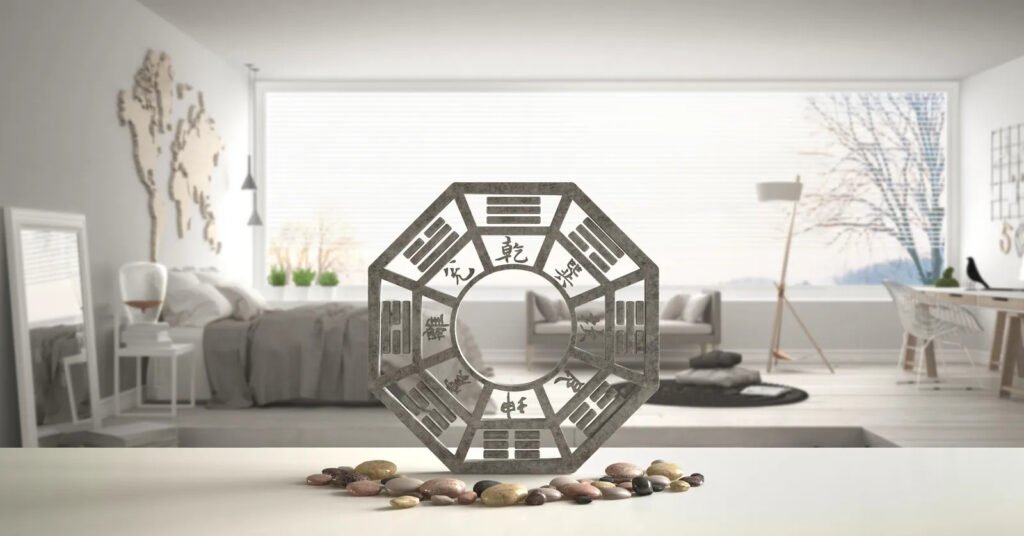Leonardo Santelices
To begin, we shall say that Feng Shui, is a Sacred Architecture form based on the fundaments of the Chinese wisdom. It is necessary to clarify that it is not the same religious architecture; it could be non-sacred religious architecture and non-religious sacred architecture.
We will begin, to get close to the meaning of architecture, by intuition all of us have an idea of its significance, but there is no easy or a unique answer, starting from Schelling’s simple but clear definition that says: “Architecture is poetry made stone” to more complex and technical ones, what´s clear is that Architecture is ligated to the human being, let’s look at what some distinguished protagonists say about it:
Marc Vitruvius in the first b.c. Century says “Three are the parts of the Architecture: the Construction, the Gnomonic and the Mechanics (…) Such Constructions must achieve the security or firmness (firmitas), utility (utilitas) and beauty (Venustas)…” The Firmitas is the function destined to the architectural piece of work. Venustas is the beauty, symmetry and harmony of the work
In its first book of architecture, Vitruvius says: “The Architecture is a science adorned by many other disciplines and acknowledgement, by for which judgments the other arts pass. It is practical and theoretical. The practices are a continuous and expedite frequentation of its use, handmade, over its correspondent material to what it wishes to form. The theory is the one who knows how to explain and demonstrate with the thinness and laws of proportion, the made works”. Vitruvius definition is centered on the Architectural work and what its required to make it.
John Ruskin in its work the seven lamps of Architecture, wrote in the XIX century “Architecture is the art of rising and decorating buildings constructed by the man, whichever its destiny it may be, so that its aspect contributes to the health, to the strength and the pleasances of the spirit”. Ruskin gives a more esthetic and formal explanation but it also seeks to grant a more human face.
In his work toward and Architecture, Le Corbusier, tells us that beyond the utilitarian part: “Its meaning and its duty it’s not only to reflect the construction and absorb a function, if for function its understood as the pure and simple utility, the one of comfort and practical elegance. The architecture is the art in its most elevated sense, its mathematical order, its pure theory, complete harmony thanks to the exact proportion of all its relations: this is the “function” of architecture.” Also it moves away from a pure utilitarian sense to approach a more artistic vision to emphasize the proportion, which is the geometric or the precise measure, fundamental element in Art, design and Architecture.
Frank Lloyd Wright (“In the cause of Architecture” in ARCHITECTURAL RECORD, 1927-1928) “The building will not be, from now on, a block of construction materials elaborated from outside, like a sculpture. The internal environment, the living inner space, is the fundamental fact of a building, ambient that expresses as a closed space to the outside”. Like the Taoist principles read, the walls, the floor and the whole construction have the purpose of building something empty, an internal space with determined qualities to allow the human living development.
In all the definitions we see that Architecture is always related and it’s a human work as we will see further on.
If we seek the etymological origin we find that it’s a composed term of two words, arche or arjé and tectón, which it’s usually translated as the first or the chief of the builders. But if we see arjé as the origin, first for it’s essence, not for the situation and see the construction in the Vishvakarman’s way. As the intelligent construction of the cosmos, then Architecture in its greater levels it´s a magnificent science art.
- Nature´s Intervention
An aspect that characterizes the human being and makes him different tan the animals is the creation and generation of culture. The natural response of the animals toward a challenge is biological, instead in the human being, the answer is cultural. To respond, for example, to the climate variations, the human society builds other kind of homes, designs different clothing and also modifies its behavior; all of these are cultural answers.
The world where the human being lives then, is not only biological and material, is in an important way a cultural world which is the one that gives sense to the objects, space orientation and rhythm to the time.
The places have physical characteristics, but also historic and symbolic. The objects have a utility, but also a meaning.
Each civilization generates a proper culture that allows her to face the challenges which its circumstances establish.
That is very important at the time to treat the relation between humans and Nature, the human society and also the individuals, we intervene the Nature, we modify it, here it presents an apparent paradox, in a way we belong to Nature and by the other we transform it.
Not only humans intervene Nature, but the other reigns do also too, a mineral vein for example, it’s a modification at this level. The appearance of the trees was a great intervention of Nature of that age. But today we consider the trees almost as a symbol of Nature, even though they were gigantic depredators to other vegetables when they grew up. The animals, to develop there live intervene and modify nature, hunt other animals, eat vegetables, but really nothing of these is out of nature, this constant modification and transformation dynamics is part of the harmonic natural live.
One thing is to intervene Nature with the arts and sciences that form the culture and other very different is to wish to dominate it, in the first one we have a harmonization dialectic in the search of a third one included, is a search of the harmony, which is the main goal of Feng Shui. In the other way confrontation dialectic to annihilate the different is hunted.

Macro cosmos – Micro cosmos
We have already seen that the human beings always intervene nature and that the challenge is that the intervention must be harmonic within nature and the human beings, this has always been the search of the human culture in general and architectures in particular, to harmonize the macro cosmos with the microcosm.
For the pytagorics the Cosmos is the Universe harmonically ordered by the Creator by the numbers.
The term Cosmos it’s related in a specifically way with order, this order which for the pytagorics has its origin in the numbers, it’s the order that we see expressed in justice, the good and beauty. It’s not a schematically order, it’s not a system created by a person, it’s the natural order of the universe. For the classical, this order can be discovered, this order is the wisdom properly, to discover it, it must be loved, and that is why Pythagoras is the creator of the word Philosophy or wisdoms love.
The human being is part of the same harmonic order, is a micro cosmos. Macro or micro is a matter of size and that is always relative to with what we compare it, but both are cosmos; both participate of the same laws, the same principles.
It’s necessary then that the human being feels part of the universe, which participates in the natural order. Says Confucius just middle: “What the sky has ordered it is called natural. To follow the natural is to what it is called the Way. The regulation of this way is what it is called doctrine”
We already said that the human beings don´t live in nature as the animals, instead we intervene the nature to create a different world a cultural world, but for that to be valid, it is essential that it will be according to the natural order.
Then the way Feng Shui is to follow the natural, first off course it must be reached and the doctrine is what allows regulating the way.
In another part, the macro cosmos is a too big scale for the human being, requires an intermediate scale, an intermediate cosmos a meso cosmos, which joins or gets together the micro with the macro cosmos, but also, participates of the same laws from either one, so it is a cosmos too.
This intermediate cosmos is the architectonical space in its different scales, starting with the city, the country, until the homes.
Here we have a fundamental aspect, when Architecture participates from the same order as the Cosmos, then it is Sacred Architecture.
